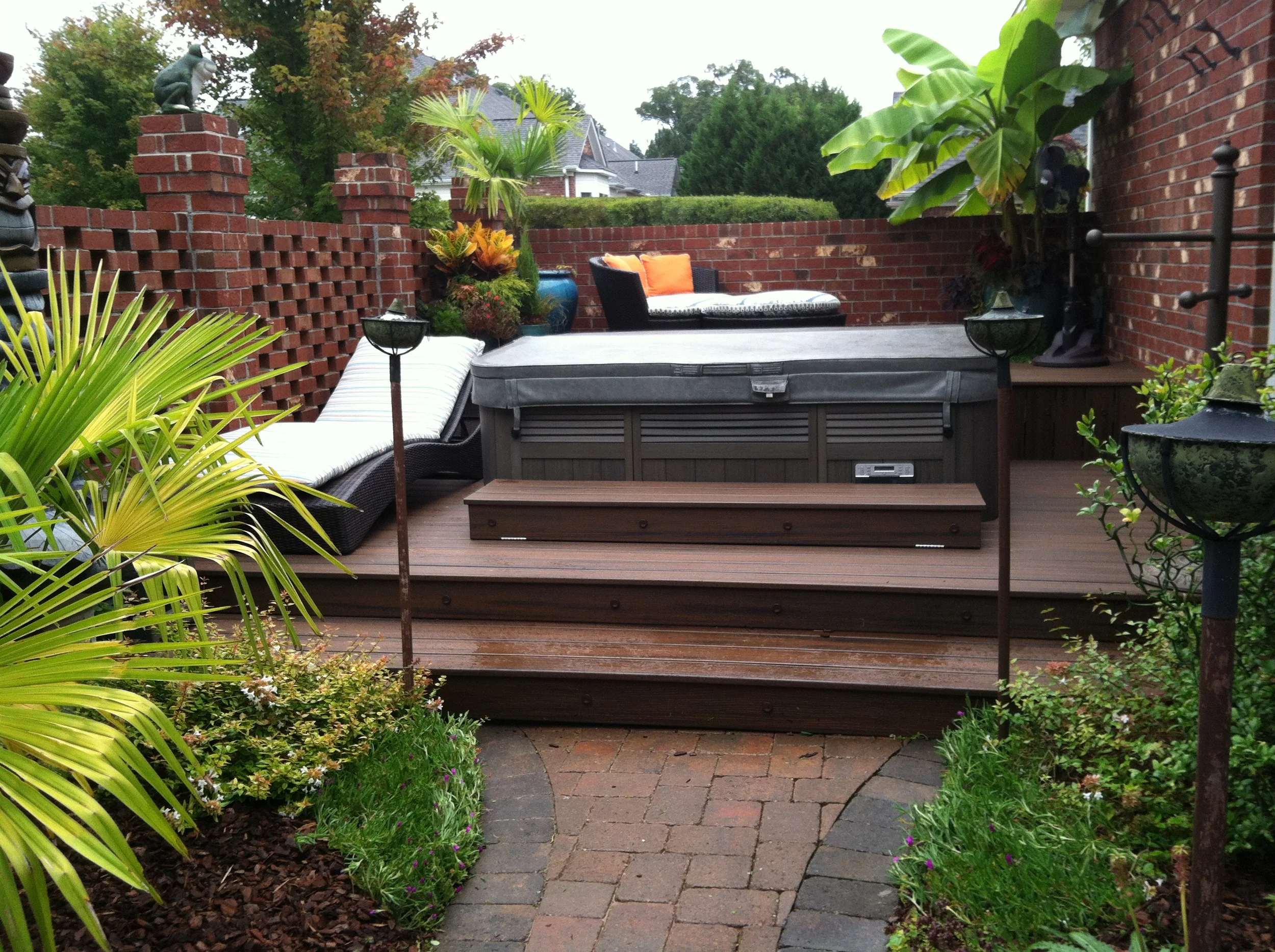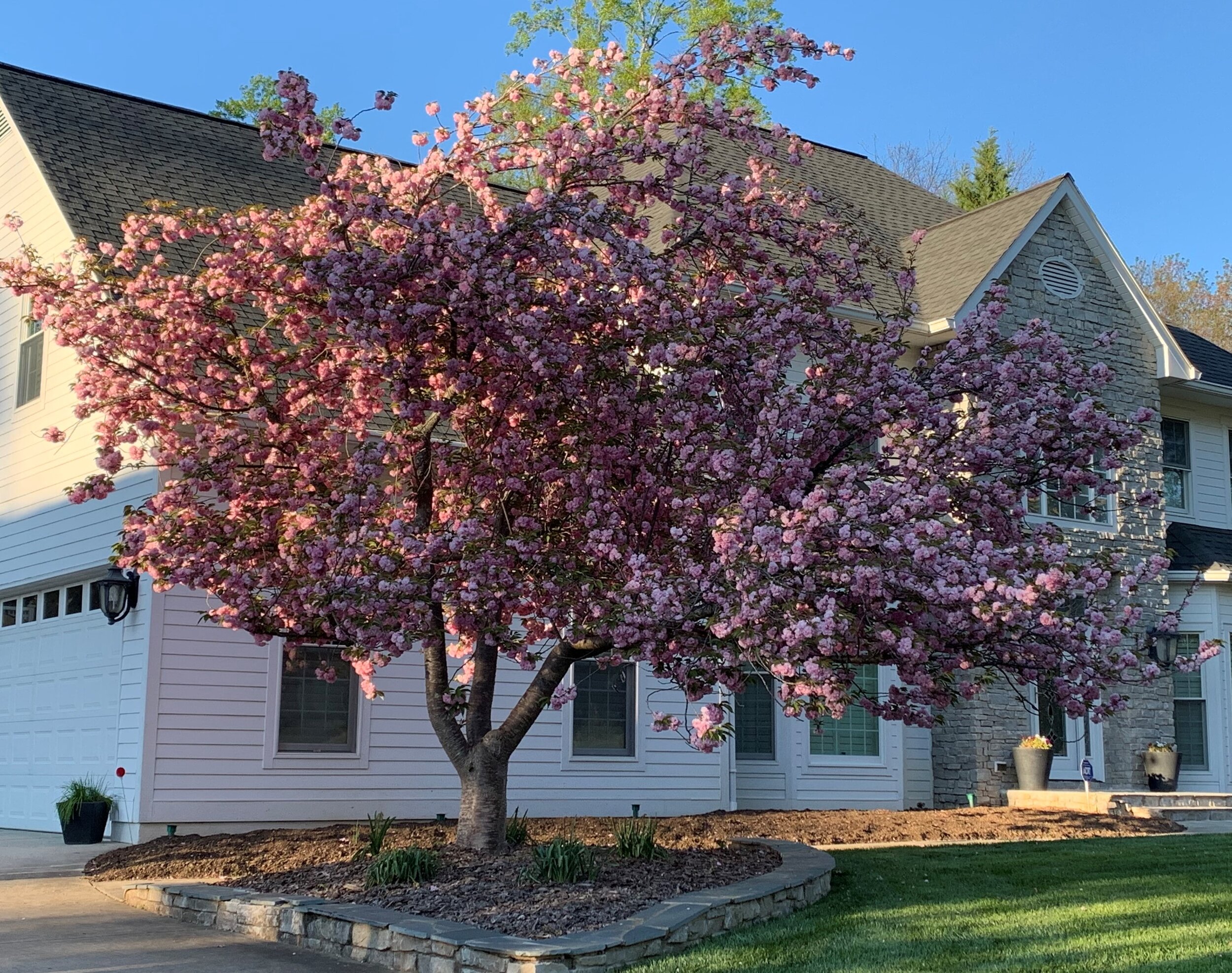This final part in a four-part series on Spring plants. Part four covers Spring trees.
My Spring plants blog series covered Spring bulbs in part one, Spring perennials in part two, and Spring shrubs in part three. I will cover our fourth topic in today’s blog – Spring trees!
Trees provide so many amazing benefits in landscape designs. Two advantages of Spring trees are profuse blooms and a large variety of choices. The blooms on these trees add to a sense of joy with the return of Spring and adds a multitude of colors to any landscape. You can choose from a variety of Spring blooming trees. This means you can spread the bloom times out between early spring, mid spring, and late spring to enjoy color the entire season.
Like other landscape elements it is sometimes hard to envision what a tree will look like on your property. Luckily, my 3D landscape designs allow you to see exactly how trees and other landscaping elements will look like in your yard before landscaping installation occurs!
Spring Trees
Nature provides so many wonderful trees to choose from to consider for your landscape design. I would highly recommend any of the flowering trees below for show-stopping blooms, hardiness, and attractive habit and leaves. Below are a few of my favorite Spring trees that look stunning in landscape designs. I share where each plant grows and their optimal growing conditions.
If you missed the other parts in this blog series, please check out this hardiness zone map as a reference point. The Piedmont Triad in North Carolina is in zone 7. Zones are determined by average annual extreme minimum temperature. For a more in-depth look at zones and to search your zip code, visit the USDA Plant Hardiness Zone Map.
Dogwood (Cornus florida)
Hardiness Zones: 5-9
Optimal Growing Conditions: Partial shade to full sun. They need moist, well-drained, slightly acidic soil.
Click here for more information on Dogwood.
Redbud (Cercis canadensis)
Hardiness Zones: 4-9
Optimal Growing Conditions: Full sun to partial shade. These plants need well-drained soil.
Click here for more information on the Redbud. *Note: These blooms emerge from the stems!
Saucer Magnolia (Magnolia X soulangeana)
Hardiness Zones: 4-9
Optimal Growing Conditions: Full sun to partial shade. They need moist, acidic, organically rich and well-drained loamy soil.
Click here for more information on Saucer Magnolia.
Star Magnolia (Magnolia stellata)
Hardiness Zones: 4-8
Optimal Growing Conditions: Full sun to partial shade. Moist, well-drained, slightly acid soil is best for these plants.
Click here for more information on the Star Magnolia.
Flowering Cherry (Prunus serrulata)
Hardiness Zones: 5-8
Optimal Growing Conditions: Full sun, partial shade, or mostly shade. These plants need well-drained, moist, acidic soil.
Click here for more information on the Flowering Cherry.
Amelanchier (Amelanchier arborea)
Hardiness Zones: 4-9
Optimal Growing Conditions: Full sun to partial shade. These plants prefer moist, well-drained, acidic soil.
Click here for more information on the Amelanchier.
Carolina Silverbell (Halesia carolina)
Hardiness Zones: 4-8
Optimal Growing Conditions: Full sun to partial shade. Medium moisture, well-drained, slightly acidic soil is best for these plants.
Click here for more information on Carolina Silverbell.
Spring Trees Provide Shade and Beauty. See How They Look in Your Yard with 3D Design!
From bulbs to trees, I hope you have enjoyed this four-part blog series on Spring plants. If you are considering adding trees or other plants, you do not have to guess what they will look like in your front or back yards. My 3D landscape design allows you to see exactly how they will look on your property, before anything is even planted. Get started today by calling me at 336-848-7164 or complete this easy contact form.
I look forward to discussing all your landscaping needs and making your outdoor oasis vision a reality! Be sure to check out my Instagram page (@3Dlandscapearchitect) for landscaping inspiration ideas and more fun facts on Spring plants!















